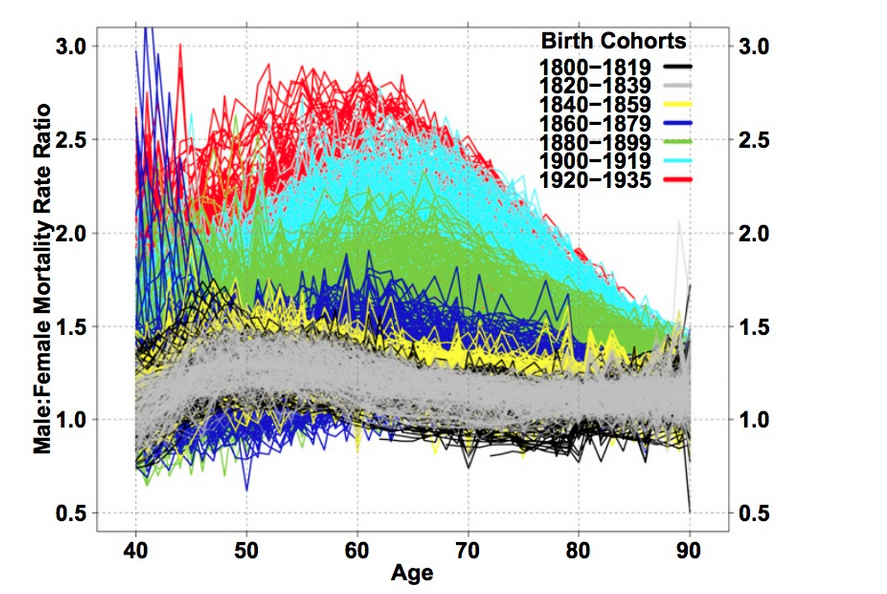A new study investigating the significant mortality gap between men and women has narrowed it down to two main factors - smoking and cardiovascular disease - and researchers say this could explain why the mortality gap has grown significantly larger over the last century.
If you're a woman, it doesn't matter where you live in the world, statistics say there's a good chance you're going to outlive your male counterparts. According to the World Health Organisation, women living in a low-income country will, on average, live around three years longer than men, and in high-income countries, this figure increases to six years. But why?
Things haven't always been this way. As the researchers from the Max Planck Institute for Demographic Research in Germany report in their study, this mortality gap has grown significantly since the beginning of the 20th century.
The researchers looked at mortality data in people born between 1800 and 1935 in 13 developed countries and compared the differences in men and women. Represented in the rather messy figure below, you can see all the different birth cohorts represented by coloured lines, with male and female mortality rate ratios being plotted against age. As Alex B. Berezow explains at Real Clear Science, if you compare age 60 through all the cohorts, you can see how striking the difference becomes:
"The mortality rate ratio for people born between 1800 and 1839 (black and grey lines) hovers roughly around 1.2; that means that about 120 men died for every 100 women who died at age 60.
Just a few decades later, a dramatic shift occurs: the male-female mortality rate ratio for people born between 1880 and 1899 (green lines) skyrockets to 1.6, meaning that 160 men died for every 100 women who died at age 60. Then it goes from bad to worse. For the 1920 to 1935 birth cohort, the ratio is a shocking 2.1 at age 60, meaning that 210 men died for every 100 women."
 Credit:Hiram Beltrán-Sánchez et. al.
Credit:Hiram Beltrán-Sánchez et. al.
The age of 60 is important - the team reports in Proceedings of the National Academy of Sciences that "excess adult male mortality is clearly rooted in specific age groups, 50 to 70". When they examined the data on cause of death between men and women, they found two factors clearly stood out - smoking, and cardiovascular disease. Cardiovascular disease was the main condition associated with increased excess male mortality, they report, saying it makes the strongest contributions in birth cohorts between 1900 and 1935.
Smoking factored less, but smoking-attributable deaths were found to account for about 30 percent of excess male mortality in the ages of 50 to 70 in people born between 1900 and 1935. "However, after accounting for smoking, substantial excess male mortality at ages 50 to 70 remained, particularly from cardiovascular disease," the team reports.
So what's going on here? According to the World Health Organisation, far more men smoke cigarettes than women around the world. And although rates of female smokers are rising in some countries, globally, about 40 percent of men smoke as compared with nearly 9 percent of women.
When it comes to heart disease, right now, the statisics aren't that different for men and women, with the World Health Organisation reporting that it's a bit of a myth that heart disease is a 'male' problem, seeing as it's the number one killer of women. But the rates of heart disease have decreased dramatically since the end of the 20th century, which could explain the results of the study. According to the US Centres for Disease Control (CDC), "Since 1950, age-adjusted death rates from cardiovascular disease have declined 60 percent, representing one of the most important public health achievements of the 20th century."
There's clearly still a lot of mystery surrounding the mortality gap between men and women, but the one thing we do know is it's growing. And research like this will hopefully help us to nail down why.
